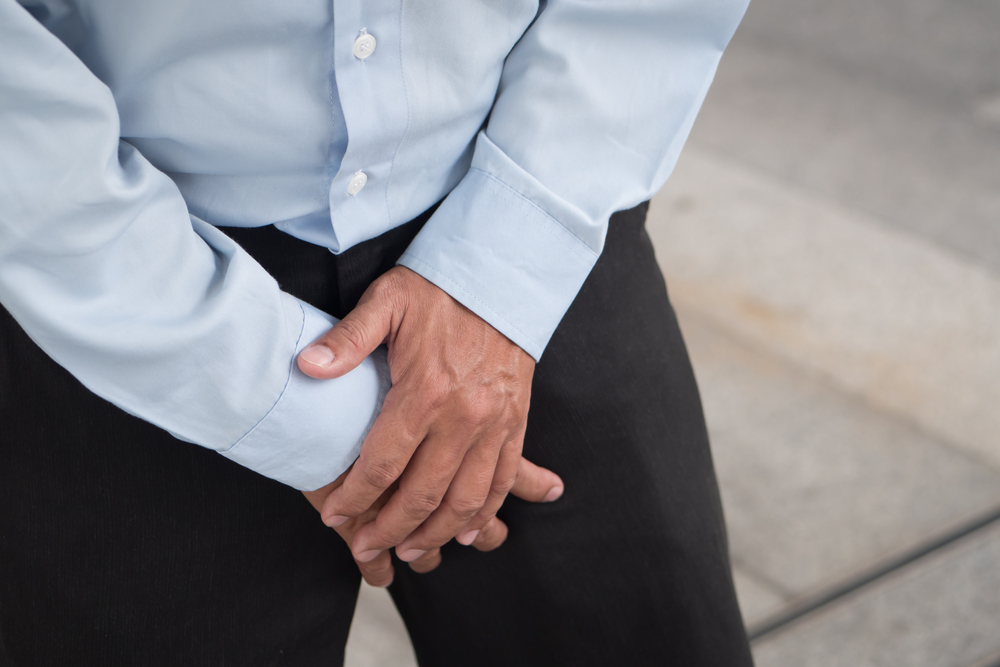Urinary incontinence is the loss of bladder control. It’s a common health concern in both men and women, but that doesn’t make it any less difficult to live with. 25 million adult Americans suffer from urinary incontinence, according to the National Foundation for Continence.
Anyone can experience urinary incontinence, but it is more common in women. This is because women’s urethras are shorter than men’s. Childbirth can also weaken the muscular support of the bladder and urethra.
Keep reading for information on the five types of urinary incontinence.
1. Urge Incontinence
Urge incontinence is the sudden need to urinate. You feel a sudden, intense urge to urinate, followed by an involuntary loss of urine. The urge to urinate is impossible to ignore. Many people don’t always make it to the bathroom in time. This can make life difficult. You may find yourself planning your days around access to a bathroom. Having to use the bathroom without much notice can be limiting and can lead to leaks or accidents.
Urge incontinence is caused when your bladder muscles contract at the wrong time. This is due to a miscommunication between your bladder and your brain. Your bladder incorrectly tells your brain that it’s full.
A minor infection can lead to urge incontinence. It can also be caused by something more serious, such as a neurologic disorder or diabetes.
Treatment options include biofeedback therapy. This is a way to gain control over involuntary bodily functions, like bladder muscle contractions. Exercises, like Kegels, can build the strength of the muscles that support the bladder and urethra. This will improve urges. Some medications can be used to treat urge incontinence.
2. Stress Incontinence
Stress incontinence occurs when urine leaks as a result of pressure put on the bladder. This is caused by sneezing, coughing, laughing, or exercising. This type of incontinence doesn’t always lead to an accident.
Women who have given birth or are pregnant often experience this type of incontinence. Giving birth and pregnancy put pressure on (or damage) the urinary system.
Stress incontinence usually involves weakened muscles. Kegels or pelvic muscle exercises can strengthen the muscles around the bladder and urethra. You can also reduce your fluid intake if you know you will be exercising.
3. Mixed Incontinence
Mix incontinence combines urge and stress incontinence. They experience urgency and leakage when physically forced. This is common.
Mixed incontinence is due to a weak pelvic floor and other health concerns. Work with your urologist to find the cause of the issue. Botox bladder injections and certain medications can help with mixed incontinence.
4. Functional Incontinence
Functional incontinence occurs when a physical or mental impairment keeps you from making it to the bathroom in time. This leakage is not associated with any health issues related to the urinary system.
This type of incontinence can range from a small leak to fully emptying the bladder. This type of incontinence is associated with the elderly.
Treatment for functional incontinence includes improving your physical and mental function so you can use the bathroom independently.
5. Overflow Incontinence
Overflow incontinence occurs when your bladder doesn’t empty completely. This results in frequent or constant dribbling of urine. If you’re unable to urinate fully, your bladder will remain full. As the kidneys process urine, the excess overflows and exits your body through the urethra.
Overflow incontinence can happen without warning. Often, those suffering from overflow incontinence also experience frequent urinary tract infections. Urine that remains in the bladder allows bacteria to grow.
This type of incontinence is more likely in men, especially men who have enlarged prostates. Treatment will address the enlarged prostate, including blockage removal, catheter placement, and medications. Kegels and pelvic muscle exercises can also help.

